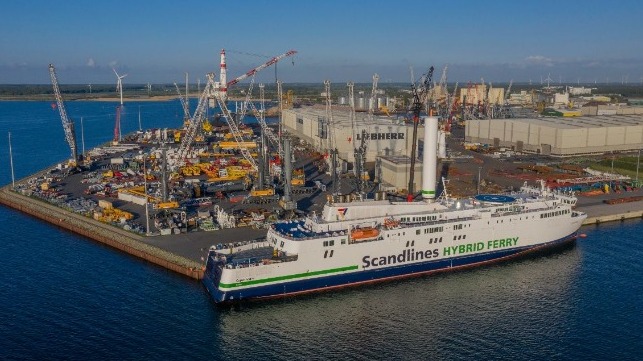Scandlines Ferry Becomes a Motor-Sailing Vessel Overnight

The Flettner rotor manufacturer Norsepower announced Wednesday that it has installed one of its advanced rotor sails aboard the ferry Copenhagen, completing the work in a matter of hours.
The Scandlines ferry was retrofitted with the 30-meter sail system in during a scheduled overnight stop, allowing her to return to service. The job was planned and prepared for months in advance to minimize downtime.
The Copenhagen is a battery-electric hybrid ferry with an optimized hull form, and she is already fuel efficient relative to her peers. With the rotor sail, says Scandlines CEO Søren Poulsgaard Jensen, she will be not only more efficient but also more profitable. "We look forward to seeing the instant benefits of this technology," Jensen said.
Norsepower's rotor sails are large, cylindrical devices that spin to create a pressure differential - the Magnus Effect - which propels the vessel forward. They are fully automated to respond to the prevailing wind conditions. When those conditions are favorable, the main engines can be throttled back, saving fuel and reducing emissions while maintaining speed.
In a recent two-unit installation aboard the tanker Maersk Pelican, Flettner rotors yielded a fuel savings of about eight percent over the span of one year, according to Maersk Tankers and Norsepower. Based on simulations, Norsepower estimates that applying its rotor sail technology to the entire global tanker fleet would reduce annual CO2 emissions by more than 30 million metric tonnes.
The Copenhagen installation is the fourth completed by Norsepower, and the company expects that it will reduce emissions by about four to five percent on average, without compromising pre-retrofit speed.
“[This installation] demonstrates that retrofitting can be achieved without any interruption and downtime to day to day commercial operations," said Norsepower CEO Tuomas Riski. “With increasing international regulatory and public pressure on the maritime industry to decarbonize, it is essential for the industry to recognize the value of one of the oldest forms of propulsion - wind. The market for wind propulsion is increasing, and this installation demonstrates how combining all methods of vessel optimization is key to broader progress."
